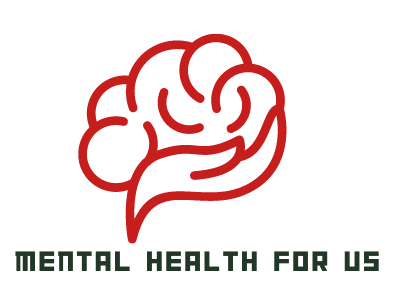Introduction
When autistic people are overwhelmed or lose control of their emotions, they have meltdowns, also known as temper tantrums. Bright lights, loud noises, social situations, and sensory input are common triggers. Meltdowns are not intentional aggression or defiance. These are often involuntary responses to overwhelming situations. ASD adults may struggle to control their intense emotions in the face of internal or external triggers. Autism meltdowns can be difficult for autistic people and others. Understanding the causes and how to deal with autism meltdowns in adults are essential steps for supporting autistic adults’ well-being.
How to Deal with Autism Meltdowns in Adults?
Due to overwhelming sensory input or other triggers, autism meltdowns can cause aggression, withdrawal, or extreme emotions. To support adults with autism during meltdowns, you must understand their signs and triggers. Caregiver support, a calming environment, and emotional regulation can help autistic children recover from meltdowns and improve their well-being. Here we will answer the question how to deal with autism meltdowns in adults. These patients can have challenging behavior such as repetitive toe walking.
Establishing a Safe Environment
Adult autism meltdowns can be difficult, but a safe environment can reduce triggers and provide support. Steps to create a safe and calming space:
1. Find a quiet place: Give the person a place to meltdown. Loud noises, bright lights, and crowds should not be in this space.
2. Use noise-canceling headphones: Sensory overload causes meltdowns. Noise-canceling headphones can calm the environment.
3. Give autistic people sunglasses: Bright lights can increase sensory overload. Sunglasses can reduce bright light discomfort.
4. Consider the individual’s sensory issues and make adjustments. Soft lighting, soothing music, and sensory toys can help the person regulate their emotions.
5. Communicate and support: Effective communication with the individual is crucial. Use visual aids or alternative communication methods to help them.
Making adults with autism meltdowns safe requires understanding and accommodating sensory and communication needs. Implementing these strategies can help create a supportive and calming environment that promotes emotional regulation and well-being.
Identifying the Trigger
How to deal with autism meltdowns in adults? The initial step is understanding adult autism meltdown triggers is essential to preventing and reducing them. Meltdowns can be caused by sensory overload, stress, and unreasonable demands.
Sensory overload occurs when autistic people are overwhelmed by bright lights, loud noises, or crowds. Unmanaged overload can cause a meltdown.
Adults on the autism spectrum can have meltdowns due to emotional, financial, or life stress. Unreasonable expectations can also cause autism sufferers to feel overwhelmed and out of control.
To identify meltdown triggers, observe and recognize anxiety or distress in the person. Agitation, restlessness, rapid breathing, and tense body movements may occur. Each person has different signs, so pay attention to their behavior.
Caregivers and support systems can reduce meltdowns by identifying their triggers. This may involve relaxing, creating a sensory-friendly environment, or using visual aids to communicate.
In summary, understanding adult autism meltdown triggers like sensory overload, stress, and unreasonable demands helps prevent and manage them. Early intervention and support are possible when anxiety and distress are recognized.
Allowing a Period of Time for Regulation Issues to Pass
After an autism meltdown, give the person time to overcome regulation issues. This time helps them regain emotional control and reset their nervous system.
Providing a supportive and safe environment helps meltdown victims recover. This may involve giving them a peaceful place to relax. Bright lights and loud noises should be avoided during this time.
Individuals need space and time. Do not force them to discuss the meltdown. Instead, reassure them they are safe and can take their time to recover.
Validating their experience is crucial. They can feel supported by knowing their feelings are valid. Relaxing techniques like deep breathing or weighted blankets can also help them recover.
Allowing time for regulation issues to pass after an autism meltdown is crucial. Caregivers and support systems can improve well-being and emotional regulation by providing space and time, validating the individual’s experience, and comforting them.
Causes of Autism Meltdowns in Adults
Understanding adult autism meltdown causes is crucial to providing support and intervention. Sensory overload, emotional stress, and communication issues can cause autism meltdowns. Sensory overload occurs when an autistic person is overwhelmed by sensory input like bright lights, loud noises, and crowded spaces. Emotional stress like frustration, anxiety, or loss of control can cause meltdowns. Communication and social interaction issues can make it hard to express needs or navigate social situations, causing meltdowns. Caregivers, therapists, and support professionals can prevent or manage meltdowns by understanding these causes.
Sensory Overload
Sensory overload can cause adult autism meltdowns. Autism can cause sensory processing issues, causing the nervous system to perceive overwhelming stimuli as threats. This can cause sensory overload, where the brain cannot process enough sensory information.
Many autistic adults have sensory sensitivities that cause meltdowns. Some people are overly sensitive to touch and become overwhelmed when touched unexpectedly or uncomfortablely. Noise-sensitive people may find loud noises intolerable and distressing. Autistic people can be visually overwhelmed by bright lights, another trigger.
A sensory-friendly environment can help autistic people manage sensory overload and reduce meltdowns. This requires reducing sensory overload and creating a calm, predictable environment. Low lighting, soft furnishings, and no or muted sounds may help.
By understanding sensory overload and creating a sensory-friendly environment, autistic people can reduce meltdowns and improve sensory management. This approach creates a more comfortable and supportive environment that improves emotional regulation and well-being.
Social Situations
Socializing can be difficult for autistic adults. Social interactions can be overwhelming and stressful due to their unpredictability. Autism sufferers can be overwhelmed by noise, movement, and sensory input in crowded places.
Autistic adults find socializing in unfamiliar or crowded places overwhelming. Verbal and nonverbal cues can be hard to interpret due to constant communication. Autistic people may struggle with social interactions. They may have trouble understanding social norms, reading cues, and responding quickly.
Autistic adults may have meltdowns at parties, crowded shopping malls or events, or open office layouts with high noise and activity. Sensory overload and social pressure can overwhelm autistic people, causing meltdowns or other negative reactions.
Awareness of these issues and social support for autistic adults are crucial. Offering sensory breaks or quiet spaces, clear and direct communication, and social acceptance and inclusivity are examples. These strategies can help autistic adults avoid meltdowns in social situations.
Bright Lights and Loud Sounds
Bright lights and loud noises can cause adult meltdowns in autistic people. These overwhelming stimuli can cause sensory overload and emotional dysregulation.
Creating a sensory-friendly environment that reduces bright lights and loud noises is essential to solving this problem. Dimmer lighting, reduced background noise, and noise-canceling headphones or earplugs for autistic people can achieve this.
Another strategy is to avoid bright lights and loud noises. Choose quieter, less crowded places for social activities or allow autistic people to take breaks there.
Offering relaxation can also help. Reading and deep breathing can help autistic people calm their nervous system and reduce sensory overload.
By recognizing the effects of bright lights and loud noises and taking steps to reduce exposure, autistic adults can improve their social skills and reduce meltdowns.
Potential Triggers
Adult autism meltdowns can be caused by external and internal factors. Understanding these triggers can help manage meltdowns and support autistic people.
External triggers include high demands or unexpected changes. Adults with autism may meltdown in social or sensory overload situations. Bright lights, loud noises, and crowded places can cause meltdowns.
Internal triggers are also crucial. Shame, inadequacy, and injustice can cause emotional stress and meltdowns. Accepting that internal triggers are as important as external ones is crucial.
External and internal triggers must be addressed to prevent autism meltdowns. A sensory-friendly environment, minimizing overwhelming stimuli, and support during difficult social situations can help manage external triggers. Support, self-acceptance, and emotional regulation tools can help with internal triggers.
Understanding and addressing triggers can help autistic people manage meltdowns and improve their well-being.
Conclusion
In conclusion, how to deal with autism meltdowns in adults? Adult autism meltdowns require compassion and understanding. We can help autistic people regulate their emotions and recover from meltdowns by creating a calm, sensory-friendly environment, reassuring them, and validating their feelings.
Recognizing triggers and intervening early to prevent meltdowns is crucial. We can proactively avoid or reduce autism-triggering stimuli by identifying them. This may involve changing the environment, reducing noise or bright lights, or avoiding overwhelming social situations. Limiting these triggers can help autistic people stay calm and avoid meltdowns.
When a meltdown occurs, be calm and empathetic. Comfort, understanding, and reassurance that the person is safe can help them manage their emotions. Deep breathing, sensory tools like weighted blankets, and quiet activities can also help them regulate their emotions.
In summary, dealing with autism meltdowns in adults requires identifying triggers, calming the environment, and empathy. These strategies can help autistic people manage overwhelming emotions and recover from meltdowns.
FAQs
Do autism meltdowns improve with age?
Autism meltdowns can improve with age as people learn coping and self-regulation skills. However, this varies widely by person. Early intervention, therapy, and support can help autistic children manage meltdowns as they get older.
Do autistic people get angry faster?
Not necessarily, autism can affect emotional responses due to sensory sensitivities or social challenges, but anger speed varies. People with autism, like everyone else, have a variety of emotions and should not be generalized.
How do autistic adults behave?
Autism is a spectrum disorder, so autistic adults have many behaviors. Social difficulties, communication issues, repetitive behaviors, sensory sensitivities, and routine preferences are common. Autism behaviors vary greatly because each person is unique. It’s important to treat each autistic person individually, not by diagnosis.







